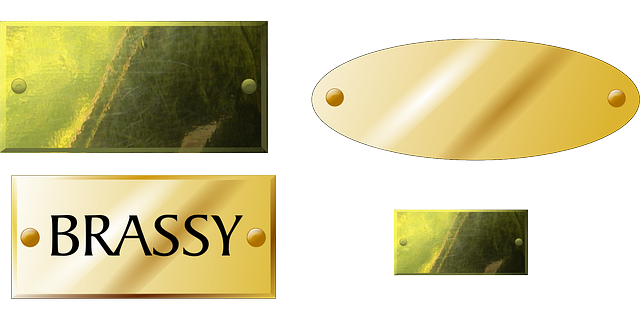401(k) plan holders looking to convert their retirement savings into physical gold and silver must first ensure their plan allows for rollovers, checking the specific provisions of their employer-provided or plan administrator documents. These documents outline procedures such as in-service withdrawals, direct rollovers, and post-employment rollovers. It’s crucial to verify that your plan is not subject to restrictions from its type, provider, or ERISA regulations. Once eligible, you can opt for an in-service withdrawal while employed or a direct rollover upon job termination, both of which should be directed towards an IRA that specifically invests in precious metals. Throughout this process, strict adherence to IRS guidelines is necessary to avoid tax implications or penalties. It’s advisable to consult with a financial advisor or a precious metals specialist for guidance tailored to your individual circumstances.
After successfully converting your 401(k) into a self-directed IRA for investing in gold and silver, it’s essential to choose a reputable precious metals dealer compliant with IRS regulations and accredited by the Better Business Bureau (BBB), preferably endorsed by industry organizations like the American Numismatic Association (ANA). For storing your investment, consider secure home safes for smaller quantities or specialized third-party depositories for larger amounts, which offer additional protections like insurance and disaster resistance. These depositories also assist with inventory tracking and audit compliance to maintain the integrity of your investment portfolio in line with IRS standards and your personal risk profile.
Furthermore, post-rollover, maintaining and managing your precious metals investment is crucial. You’ll need to decide between home storage or using a third-party depository, each requiring its own security measures and record-keeping practices for insurance, tax reporting, and inventory management. Regularly reviewing your holdings and staying informed on market trends will help ensure your portfolio continues to meet your investment goals and strategy.
Exploring the transformation of your retirement savings into tangible wealth, our article navigates the multi-step process of converting a 401(k) into physical gold and silver which you can see at goldiranews.org. This financial maneuver necessitates a thorough understanding of your plan’s rollover policies and the intricacies of setting up a Precious Metals IRA. With careful selection of a reputable dealer and secure storage options, you can seamlessly transition your funds into a portfolio of precious metals. We delve into each critical phase, ensuring you are well-equipped to manage your investment effectively post-rollover.
- Assessing 401(k) Plan Rollover Eligibility
- Understanding the Process of Rolling Over 401(k) to Precious Metals IRA
- Selecting a Trusted Precious Metals Dealer and Storage Solution
- Completing the Rollover: From 401(k) to Gold and Silver Holdings
- Maintaining and Managing Your Physical Gold and Silver Investment Post-Rollover
Assessing 401(k) Plan Rollover Eligibility

401(k) plan holders considering a conversion to physical gold and silver as part of their retirement strategy must first determine their plan’s rollover eligibility. This involves reviewing the plan documents provided by your employer or the plan administrator. These documents outline the rules governing in-service withdrawals, direct rollovers, or rolling over assets after termination of employment. It’s crucial to understand that not all 401(k) plans allow for rollovers; some may have restrictions based on the type of plan, the plan provider, or specific provisions within the Employee Retirement Income Security Act (ERISA).
Once you’ve identified that your plan does permit rollovers, the next step is to explore your options for executing the transfer. You can opt for an in-service withdrawal if your plan allows it, enabling you to move funds to an Individual Retirement Account (IRA) that specializes in precious metals without waiting for retirement or leaving your current job. Alternatively, if you’ve left your employer, you can roll over the funds directly from your 401(k) to a self-directed IRA that permits investments in gold and silver. In either case, careful attention to detail and adherence to IRS regulations is essential to ensure a seamless transition and to avoid any potential tax penalties or early withdrawal fees. Consulting with a financial advisor or a precious metals specialist can provide guidance tailored to your specific circumstances and help navigate the process effectively.
Understanding the Process of Rolling Over 401(k) to Precious Metals IRA

Selecting a Trusted Precious Metals Dealer and Storage Solution

When considering the conversion of your 401(k) to physical gold and silver, selecting a trusted precious metals dealer is paramount. Due diligence is essential to ensure that the dealer is reputable, offers competitive pricing, and has a diverse inventory of investment-grade metals. Look for dealers accredited by the Better Business Bureau (BBB) or those recommended by industry watchdogs like the American numismatic Association (ANA). Additionally, verify their compliance with Internal Revenue Service (IRS) guidelines to maintain the tax-advantaged status of your investment.
In tandem with selecting a dealer, establishing a secure and compliant storage solution is crucial. Your chosen storage method can be either a home safe for small quantities or a third-party depository for larger holdings. Depositories often provide additional benefits such as insurance and protection against natural disasters or theft. They also facilitate audits and inventory management, which are integral to maintaining the integrity of your investment portfolio. Regardless of the storage option you choose, ensure it aligns with IRS requirements and your personal risk tolerance.
Completing the Rollover: From 401(k) to Gold and Silver Holdings

Once you’ve confirmed that your 401(k) plan permits rollovers, the next step is to initiate the process by establishing a self-directed IRA—a special type of individual retirement account that allows for alternative assets like gold and silver. This requires opening an account with a custodian that specializes in such holdings. The custodian will provide the necessary forms and guidance on how to proceed. It’s imperative to choose a reputable custodian experienced in precious metals to ensure compliance with IRS regulations.
Upon setting up your self-directed IRA, you can then direct a trustee-to-trustee transfer from your 401(k) to this new account. This transfer should be completed as a direct rollover to avoid any taxable event; the funds must go directly from your former employer’s plan to the new IRA custodian. Once the transferred funds are in your self-directed IRA, you can purchase the physical gold and silver according to the IRS rules regarding acceptable forms of these precious metals. These purchases should also be made through your IRA custodian to maintain the tax-advantaged status of your investment. It’s crucial to carefully follow all IRS regulations and guidelines throughout this process to ensure that your rollover maintains its tax-deferred or tax-exempt status.
Maintaining and Managing Your Physical Gold and Silver Investment Post-Rollover

After successfully completing a rollover from your 401(k) to physical gold and silver, it is crucial to manage and maintain your investment properly. Once the assets are in your possession, secure storage becomes a priority. Decide whether you will store your precious metals at home or in a third-party depository. Home storage requires careful consideration of security measures, as insurance may be necessary to protect against theft or damage. Additionally, regular appraisals and inventory checks are recommended to monitor the value of your holdings. On the other hand, a depository offers professional security and insurance, but may involve additional costs and fees.
Regardless of where you choose to store your investment, it’s important to keep accurate records of your gold and silver assets. This includes purchase receipts, appraisal reports, and inventory lists. These documents are essential for insurance purposes, tax reporting, and maintaining an up-to-date portfolio overview. Regularly reviewing your holdings against the market trends ensures you stay informed about the performance of your investment and can make decisions to buy or sell as needed to maintain your desired allocation in precious metals. Proactive management and diligent record-keeping are key to preserving and potentially growing your physical gold and silver investment post-rollover.
In conclusion, transitioning a 401(k) into physical gold and silver is a strategic financial move that requires careful planning and adherence to specific procedures. By verifying the eligibility of your plan for rollovers, understanding the process of transferring to a Precious Metals IRA, selecting reputable dealers and storage providers, and following through with the rollover itself, you can successfully diversify your retirement portfolio with tangible assets. Post-rollover, it is crucial to manage your investment effectively to safeguard its longevity and value. With due diligence and informed decision-making, converting your 401(k) to gold and silver can be a prudent step towards financial security.
